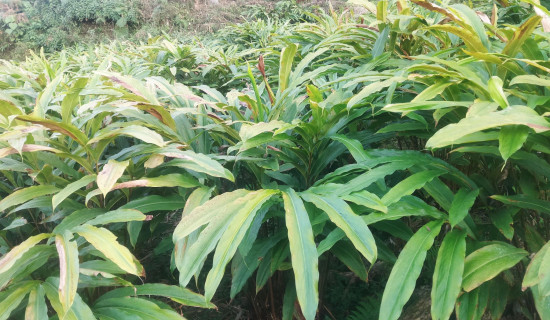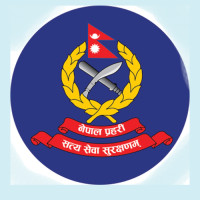- Monday, 29 December 2025
Tasty Tale Of Momo’s Popularity
Momo, Momo-cha, Mo:Mo: Ma: Ma-Cha, whatever you call it, you can’t leave a restaurant in Nepal without ordering these delicious balls of meat-filled goodness. This variation of dumplings is Nepal’s very own offering to the world. Dumplings have been around for a long time. The Georgians call it Khinkali, the Koreans call it Mandu, the Russians name it Pelmeni, the Poles call it Pierogi, and the Japanese fondly call it Gyoza.
Global cuisines have created their versions of dumplings, and we find many varieties with various fillings. Even every nook and cranny of the world that knows about dumplings has their innumerable varieties. Dumplings originated some 1800 years ago in Han Dynasty China. Zhongjing, one of the founders of traditional Chinese medicine, is believed to have created the first dumplings out of dough, meat, chilli, and herbs as a cure for frostbite. There was a point in time when a few Autonomous regions on the Chinese mainland used to prepare dumplings in a crescent shape. Mo:mo: is the version that Nepal has come up with.
The story of how Momo originally came to Kathmandu is an interesting one. During the 17th century, trade routes between Kathmandu and its northern neighbour, Tibet, were blooming. Dumplings were already a staple snack in Lhasa. During that time, around forty skilled tradesmen from the Newar community who wore white caps (topis) had the special privilege to travel to Lhasa for trade. It was then in Lhasa that the Newar traders were introduced to these famous dumplings. This magic food would immediately lure the taste buds of the Newars. The dumplings of Lhasa were big, made with yak meat and onions, and wrapped in finely kneaded dough. These dumplings were added to the traditional Newari cuisine served back home in the valley.
The merchants who returned from their business trip to Lhasa would ask their wives to prepare something similar, but with sizes that would fit their mouths just right. The yak meat was replaced with buffalo kachila (raw buff meat), ginger, garlic, and local spices in the fillings. They asked their wives to make round designs in the wrapping dough and make sealing patterns just like they would make patterns while wrapping their sarees (Nepal Bhasa: guji kyau). The small dumplings were steamed (Nepal Bhasa: manna)! These Nepali versions were called momo-cha (cha being a term of endearment for anything small in Nepal Bhasa) because they were shaped like small marbles. Unlike the larger Tibetan variety, momo-cha was easier to eat in one go, which meant they retained the succulent juices, which exploded with flavours in the mouth.
During the early days, mo:mo: in Nepal was for the rich. Affluent people used to order round momos that best suited their palate. They believed that the meat should be so soft that it should melt in the mouth, just like butter. Remember ‘Guchha Momos’? Well, those are the typical small marble (Guchha)-sized momos designed to be eaten in one go! They were bite-sized, melty, and delicious.
Nobody can compete with China and its dumpling varieties. The Chinese mainland has different sorts of dumplings and their versions, but momo-cha is authentically Nepali. It has been in Nepal for ages! Now the Indians are branding such dumplings as Momos. But the name Momo and its origin remain within the roots of Nepal. In the Newar language, MANA: NEU means "Eating Steam". Slowly, MaNa: became Ma:ma: and Momo, which finally evolved into Momocha.
The story of how mo:mo: became commercially successful in Nepal is another anecdote that has gotten lost in the realms of food history. "Have one without a dip and see the spices and the juicy meat dissolve in your mouth!" It was recommended.
Ranjana Cinema Mo: Mo became the most popular eatery that served momo during the decade of 1970. Another was Jharana Momo, opposite the Kathmandu Metropolitan Office. They offered very succulent momo. Soon, Ranjana Cinema Momo became widely famous as Kathmandu’s first successful commercial momo joint and a popular hub for young people. It quickly became a cultural icon and a place where the celebrities of the time hung out. Before long, RC had five different outlets in the capital.
On the way from Ason to Indrachowk, next to Cap House in Masam Galli, the famous Sandaar Token Momo was already doing great business at Rs. 2 per plate of 12 large pieces in 1973. My first momo was Guchacha momo at Jai Nepal Chitraghar in 1967 for 25 paisa for a plate of 10 pieces with Lapsi achar.
To remember once again, though, momos were not as widespread in Kathmandu as they are now nationwide. They were prepared as special delights at a few affluent houses and served as a luxury dish during family gatherings. But that changed very soon, and now this item has remained one of the most sought-after and ordered items in every restaurant in Kathmandu.
Whether it is a high-end nibble restaurant or a dingy Bhatti just around the corner, momos have gained a special place on every menu. Thanks to the Nepali migrants and students, momos are now taking flight far and wide across the globe!
Momo can never be replaced. Its original bite-size life lives on. However, commercialization and unnecessary experimentation are killing the authenticity of momos. Momos have become bigger; they can no longer be eaten in one go. What sets Nepali momo a class apart is its accompanying tomato achar.
Is momo an emotion?
Momo is not just food or a dumpling for Nepalis; yes, it is an emotion! That blast of hot, spicy, juicy, aromatic burst in the mouth, sparks a thousand feelings in one bite. It has a soupy base that is made out of tomatoes, timur, and chillies. Once the base is ready, the momos are then dipped in the jhol (soup) and eaten. Jhol momo is popular and loved by almost every Nepali. Replicating the taste of Kathmandu Street is not easy. The authentic taste of the Jhol achhar is unique.
Experimentation is what brought the ever-popular momo to Nepal. Momo has gone through a lot of metamorphosis to reach its current form. So, the current form of momo could be seen as a necessary step in its evolutionary story. However, Momo is perfect as it is. The amalgamation of flavours is something that shouldn’t be tampered with.
Let the fond memories of eating savoury dumplings with your friends, huddled together on a winter day, live on. With a bigger vision, though, Momo-cha could be the first choice to introduce Nepal to the world through the "Act Locally, Think Globally" banner for "Globalisation of Nepal’s Heritage Cuisines!"
It is the momo native to Nepal that has slowly spread to the Indian Himalayan Region of
Darjeeling, Ladakh, Sikkim, Assam, Arunachal Pradesh, Himachal Pradesh, Uttarakhand, and each street and corner of Delhi now. It is
popular across a wider region of the Indian subcontinent. It is believed that Momo went to India in the 1960s, when many Tibetans entered
the country.
They settled in several different parts of the country, including Ladakh, Dharamshala, Calcutta, and Delhi, at the same time that momos started spreading out.
There is also another theory suggesting that the same Newar merchants of Kathmandu took momo recipes to India through the Silk Road. Their popularity then trickled down to other parts of India, ultimately becoming a popular food in every corner of the country. Regions like West Bengal, Sikkim, Arunachal Pradesh, and Assam all enjoy different varieties of momo.
(Baral is a Research and Development Chef of Asian Cuisine for a multinational company, www.doco.com, which caters for 78 airlines globally.)















-original-thumb.jpg)
